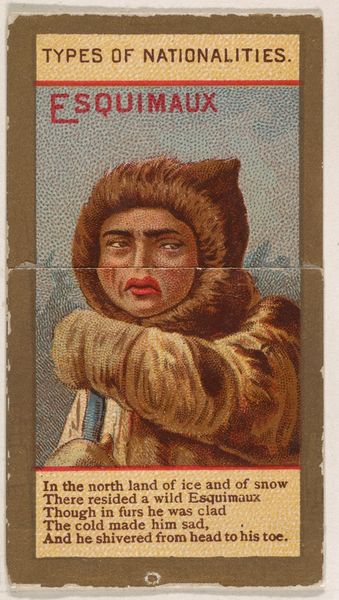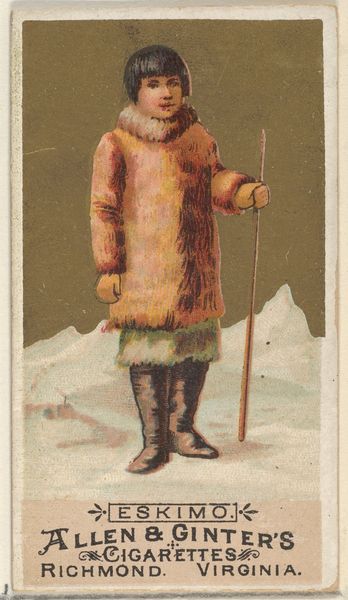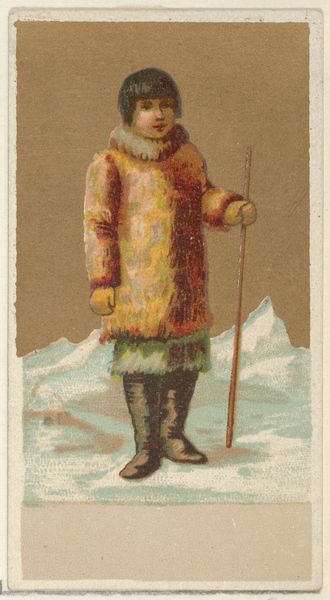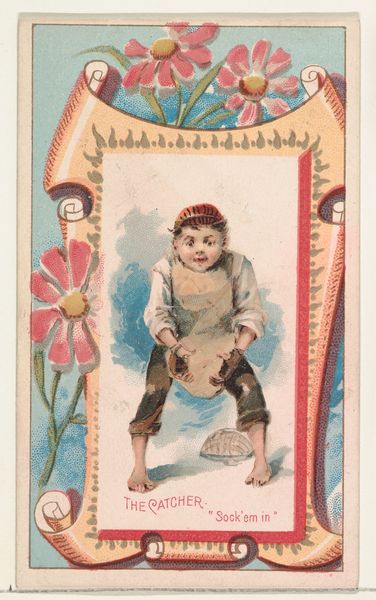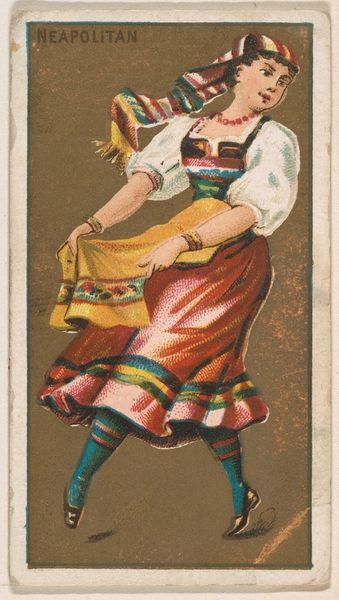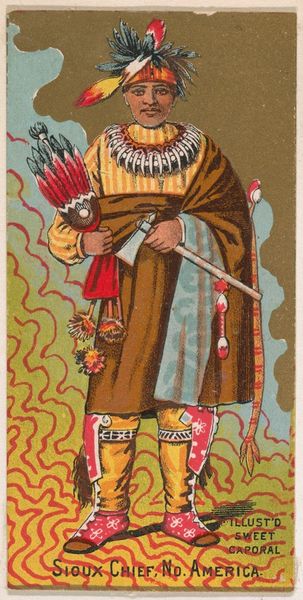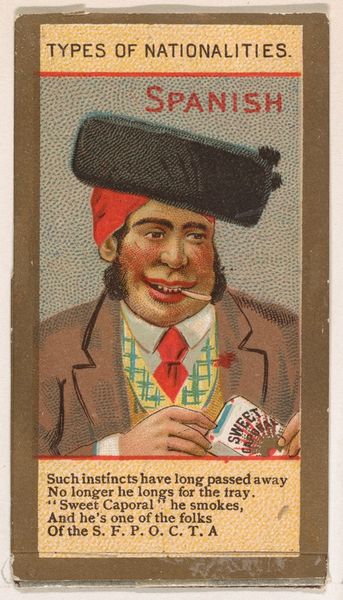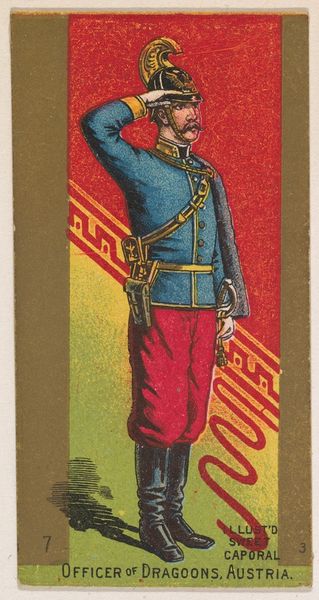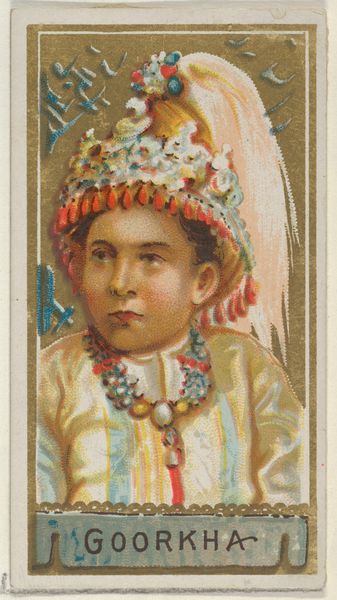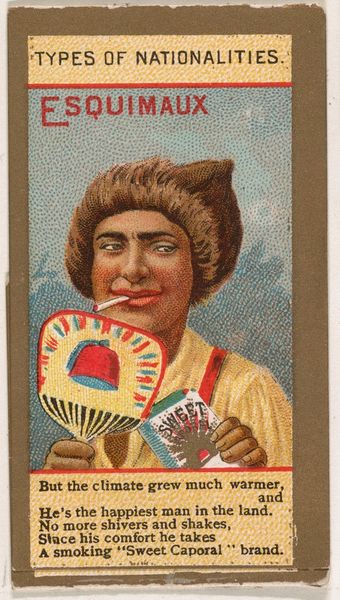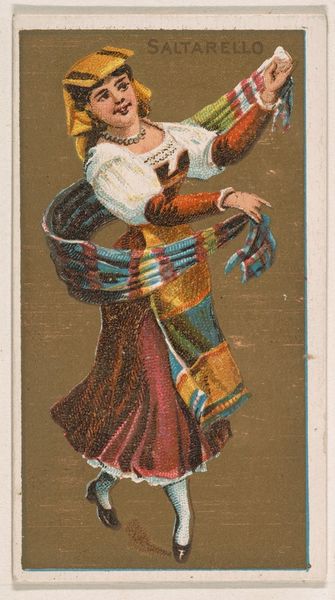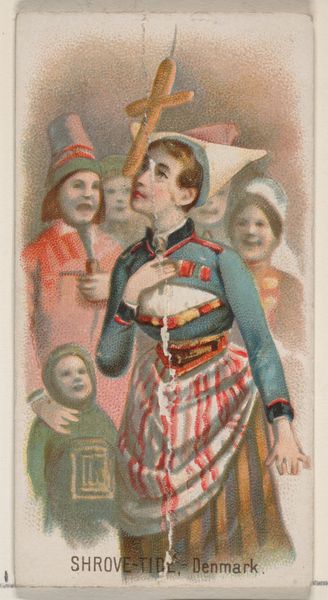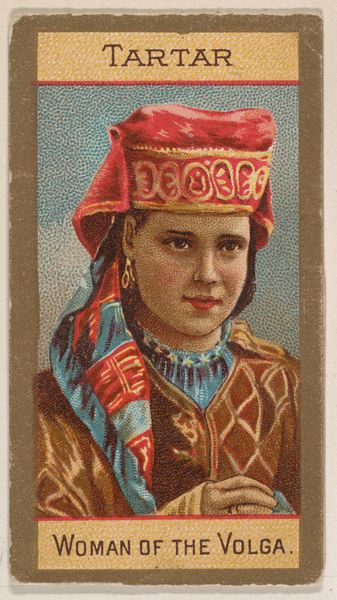
Esquimaux, Woman and Child, from Types of Nationalities (N240) issued by Kinney Bros. 1890
0:00
0:00
#
portrait
# print
#
coloured pencil
#
portrait art
Dimensions: Sheet (Folded): 2 11/16 × 1 7/16 in. (6.8 × 3.7 cm) Sheet (Unfolded): 6 7/8 × 1 7/16 in. (17.4 × 3.7 cm)
Copyright: Public Domain
This small chromolithograph of an Inuit mother and child was produced by the Kinney Brothers Tobacco Company as part of a series called ‘Types of Nationalities.’ Printed in the late nineteenth century, this image embodies the then-popular fascination with categorizing people by race and ethnicity. Tobacco companies often included such cards in their products to boost sales, capitalizing on a widespread interest in exotic cultures. But these images also reflect the power dynamics of the time, reducing complex societies to simplified stereotypes for mass consumption. The Inuit, who had complex social structures and deep ties to their environment, are here reduced to a single image that emphasizes their perceived difference from Western society. Understanding this artwork requires us to consider its original context, examining sources such as anthropological studies, marketing materials, and popular media of the period. By looking at the social and institutional forces behind this image, we can better understand its historical significance and its role in shaping perceptions of non-Western cultures.
Comments
No comments
Be the first to comment and join the conversation on the ultimate creative platform.
